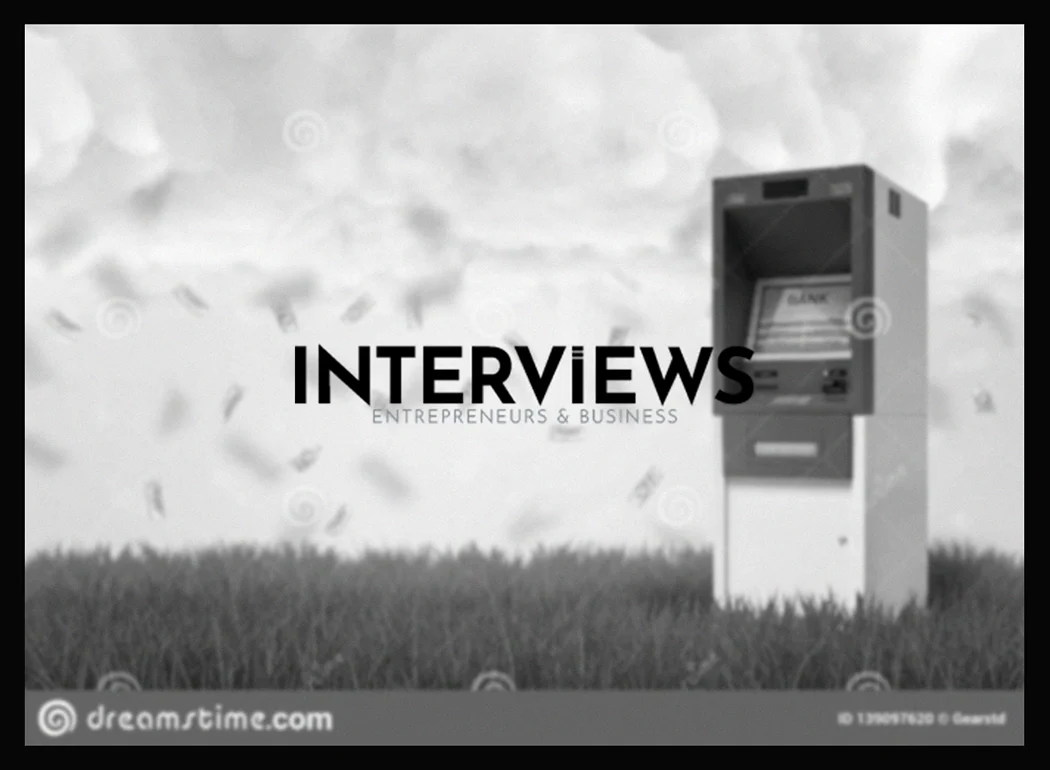Thinking About Ditching the 9-to-5? How About Owning an ATM Machine? Seriously.
Have you considered owning an ATM? It is a legitimate business opportunity. There are over 451,500 ATMs in the US as of 2023. Less than half belong to major banks. The rest belong to individuals like you, seeking profit from transaction fees.
Why choose ATMs? They can be surprisingly profitable. Once they’re set up, the costs are manageable. Interested? Let’s explore how to start your own ATM business and profit from transaction fees.
So, You Want to be an ATM Mogul? Let’s Talk Business Setup.
First up, the setup process is essential. Nobody wants legal trouble, right?
LLC – Fancy Letters or Actual Protection?
Do you need to form an LLC for your ATM business? Not really. But it can be a wise choice. An LLC protects your assets. It shields your personal money if someone decides to sue your business.
If your LLC intends to hire employees or face certain taxes, an Employer Identification Number (EIN) from the IRS is necessary. Think of it as your business’s social security number.
If you opt for an LLC, open a separate business bank account. Mixing personal and business funds leads to confusion. Your future self will appreciate this decision.
Should you hire a bookkeeper or accountant? Ideally, both are great. If funds are short, identify your biggest need. Is it daily transactions or broader financial strategy? Solve your immediate issues first. You can always add the other later.
Business Registration – Keep it Simple, Smarty.
You could go corporate with your ATM plans. Most people register as sole proprietors. This is easier and involves less paperwork. You’re saying, “I’m [Your Name] and my ATM business is [Cool ATM Business Name].”
Legal & Financial Due Diligence – Don’t Skip This Bit.
Banks will scrutinize ATM owners. They want to check your background. If you use a middleman, they will check them too. This monitoring involves reviewing business documents—licenses, permits, contracts. They might investigate licenses to ensure you are not laundering money.
Business Bank Account – Where the Magic Happens.
Once your DBA is sorted, open that business bank account. This is the heart of your ATM’s cash flow. It’s where transaction fees land and where you manage cash for restocking.
Show Me The Money! (But First, The Initial Investment)
Let’s discuss the costs involved to get this ATM business running. The reality is you must spend money to earn money.
The ATM Machine Itself – New or Used? Fancy or Basic?
A new ATM starts at around $2,000, depending on features. Basic models will hover around that price. Fancier options can cost up to $10,000. Older models might look worn and slow. They can deter potential users. Choose wisely.
Cash Stock – Gotta Fill ‘Er Up!
ATMs require cash supplied by you. A good rule is to budget about $2,000 weekly for each ATM. Yes, really. If you plan on ten ATMs, that’s at least $20,000 just to stock them with cash. More is better, just to be safe. Cash is critical.
ATM Franchises – Plug-and-Play or Pricey?
Contemplating a franchise? They offer a ready-made business model. However, franchise fees can start around $25,000. Additional costs for signage and equipment add up quickly. Franchises simplify the process but increase initial costs.
Leasing an ATM – The Rent-to-Own Vibe.
Don’t want to spend thousands up front? Leasing is an option! You might lease an ATM for under $80 monthly, often including installation. To lease, you’ll need a business plan and financial info. Leasing eases initial expenses but adds monthly costs.
Ka-Ching! Profitability and Revenue Streams
Now, let’s explore how you can profit from these ATMs.
Profit Potential – Is This a Gold Mine or Fool’s Gold?
Owning an ATM can provide solid income. Some estimate earnings range from $20,000 to $30,000 per year. A well-placed ATM might earn about $750 monthly in fees. Even a modest number of transactions can yield good returns. Remember, location matters.
Revenue Streams – More Than Just Transaction Fees, Baby!
Transaction Fees: These are your main income source. Users who are not customers of your ATM’s bank pay transaction fees. You keep those fees.
Advertising: Sell ad space on the ATM screen! Local businesses can pay for advertisement space while people wait for their cash. It’s extra income for minimal effort.
Factors Affecting Profitability – Location, Location, and… Location!
High-Traffic is High Profit: Ideal locations are busy spots needing quick cash—think bars, clubs, festivals, and cash-heavy areas. More transactions lead to better profits.
Costs Exist (Boo!): Be mindful of expenses. Maintenance, security, and cash replenishment all add up. If your ATM is on someone else’s property, you’ll likely share fees with the owner. Partnerships matter.
Location, Location, Installation – Where Do We Put This Thing?
You can’t just place an ATM anywhere and expect success. Picking the right location is essential.
Placement – Electricity is Your Friend.
ATMs can be installed almost anywhere with electricity. Think beyond banks—gyms, gas stations, and more are valid options.
Space Requirement – Not Much Room Needed.
You don’t require a vast area. Generally, 60 to 100 square feet will suffice for an ATM with space for users.
Installation Must-Haves – Flat Roofs and
NOCs?
Okay, some technical bits. If you want a specific type of ATM (VSet, apparently?), a flat roof might be needed. Also, brace for bureaucracy. You may require a “No Objection Certificate” (NOC) from local authorities. And electricity? About 1 kilowatt keeps your machine humming.
Location Types – White Label What-Now?
“White-label” ATMs are generic, “no name” ATMs. You spot them everywhere that’s not a bank – grocery stores, convenience stores, random shops. These are your targets. People spend cash there and might need quick money.
Cash Management – Keeping the Machine Happy.
An empty ATM is a sad ATM and doesn’t earn you money. Cash management is crucial for ATM owners.
Refilling the Beast – Your Job.
As the ATM owner, you must ensure the machine is full of cash. You can do this yourself or hire a third-party company to handle it.
Refill Frequency – Daily or Monthly?
How often you refill depends on location and usage. For busy spots, you may need daily refills. In quiet areas? Once a week or month might work. Monitor transaction volumes to find your refill rhythm.
Replenishment Process – Bank Secrets.
Banks refill ATMs themselves or hire armored car companies. The process is straightforward: remove old cash, add new cash, ensuring the right mix of bills. It’s serious business.
Cash Holding Capacity – What’s Possible?
Average ATMs hold between $10,000 and $20,000. Busy ATMs can hold $50,000 or more. Think about your location and usage when planning capacity.
Cash Recycling – The Money-Go-Round.
ATMs can “recycle” cash. Money withdrawn can be refilled by deposits. This means reusing cash for future withdrawals. The leftover cash? That’s your profit!
Getting Reimbursed – The ACH Shuffle.
When someone uses your ATM, the processor gets the funds from the cardholder’s bank. Then, they ACH (Automated Clearing House) the money into your business account the next day. It’s how you receive payment.
Security and Insurance – Keeping Your ATM Safe.
ATMs are targets for thieves. Security is essential.
Security Measures – Locks, Cameras, Rottweilers?
You need strong locks, security cameras (visible and hidden), and reconsider the Rottweiler for added security. This may scare off customers.
Insurance – Bad Stuff Happens.
Commercial property insurance covers your ATM and related equipment from damages due to fire or theft. It acts as a safety net for your investment.
GPS Tracking – Keeping an Eye on the ATM.
Many ATMs have GPS trackers. These aid in theft prevention and quick recovery. They also help banks monitor ATM status. GPS can deter criminals and minimize your losses.
Insurance and Risk Management – GPS Reduces Risk.
Insurance companies favor ATMs with GPS. It lowers their risk level. Sometimes, having GPS is a requirement from insurers. This improves security and may help with insurance rates.
Operational Aspects – Daily Operations.
Owning an ATM business isn’t just buying a machine and counting money. There’s operating involved.
ATM Operation – More than Plugging It In.
You must install the ATM properly, connect it, and keep it running well. It’s more than just plugging it in and hoping.
Who Fills the ATM? – Not the Tooth Fairy.
Banks or third-party companies handle cash for bank-owned ATMs. For your ATM, it’s you or your hired help loading cash.
ATM Operator Fee – Surcharge City.
This term refers to the fees charged to non-customers using your ATM. Operator fees or surcharges are how you directly earn money per transaction.
Marketing and Promotion – Marketing for an ATM?
Yes, you need some marketing. If your ATM is in a less visible spot, think about signs or mentions on local business websites. Notify people about your money machine!
Rent to Business – Reverse Rent?
Some businesses rent ATMs, paying you a monthly fee to host your ATM. This is the opposite of you paying rent to place your ATM. It’s another revenue stream.
Alternative Strategies – Outside the Box.
Want creative options with your ATM?
Partnering with Businesses – Financial Friends.
Collaborate with businesses! Install ATMs in their locations for mutual benefit. Negotiate revenue-sharing deals.
Building a Network – More is Better.
Don’t stop at one ATM. Build a network! Acquire more machines and locations. More ATMs mean more profit potential.
Mini ATM Business – Smaller Machines.
Some companies offer “mini ATM” services, with smaller machines for businesses. Become an agent and register to install these mini ATMs. It’s a less capital-intensive entry point.
Risks and Challenges – Owning an ATM.
Owning an ATM business has its hurdles.
Initial Investment – Money Upfront.
Starting a business requires cash. ATMs need funds for purchase or leases, securing locations, and operating expenses. Be prepared to invest.
Location Selection – A Critical Factor.
Picking the wrong location can ruin your ATM business. Low traffic results in low transactions and profit. Research and choose wisely.
Cash Management – Monitor Cash Flow.
Running out of cash is disastrous. You should focus on cash management to ensure your ATM is ready to dispense bills.
Security Risks – Constant Threats.
ATMs are targeted regularly. Theft and vandalism pose real threats. Security is vital for protecting your investment.
Insurance Coverage – Essential Protection.
Proper insurance is crucial. It protects against financial ruin from theft, damage, or lawsuits. It’s a cost worth paying for peace of mind.
Regulatory Compliance – Follow the Rules.
ATMs must adhere to regulations.
Licensing – Mostly Simple.
You typically don’t need a special ATM license to operate an ATM business. However, you do need a business name for contracts with processors and to open a business bank account.
ATM Regulation – The Fed’s Role.
The Federal Reserve regulates state-chartered banks in its system. This applies to ATMs as well.
It might not seem like it concerns you directly. However, bank regulations impact ATM operations and fees. Stay updated on financial regulatory changes.
ATM Fees and Charges – The Price of Convenience.
Let’s discuss the money element: fees.
ATM Surcharges – The Fee-Nominal Income Source.
ATM operator fees. ATM surcharges. These are fees charged to non-customers using your machine. The average cost to use an out-of-network ATM is about $4.77. This is divided between the operator and the ATM network. Those fees add up fast!
New ATM Rules – Fees May Vary (And Change).
ATM fee regulations can shift. For example, banks may have limits on charges for withdrawals. Monitor new regulations that might influence your surcharge earnings. Finance is always changing.
ATM Types – Beyond the Basic Cash Dispenser.
ATMs offer more variety than you realize. It’s not just one design.
- Cash Dispensers: Basic machines give cash.
- Full-Service ATMs: More complex. They handle deposits, transfers, and banking tasks.
- Intelligent ATMs: Advanced features for bill payments and transactions.
- Drive-through ATMs: For people who prefer staying in their cars.
- Recycling ATMs: These accept cash deposits and dispense cash for withdrawals. Efficient!
- Bitcoin ATMs: These allow buying and selling Bitcoin and cryptocurrencies.
- On-Site and Off-Site ATMs: On-site at branches. Off-site at stores, gas stations, etc.
- Mobile ATMs: Portable machines used at events and festivals.
Important Considerations (For ATM Users, But Good to Know).
A few safety tips for ATM users (tips to promote user confidence):
- Never accept help from strangers at an ATM. Scammers exist.
- Cover the card slot when swiping your card. Prevents skimming attempts.
ATM Limits – Know Your Withdrawal Boundaries.
ATMs set withdrawal limits.
- Daily limits often around Rs 50,000 (check local limits).
- Visit your bank’s website for specific ATM limits.
- Your account contract should state your withdrawal limits.
This is the not-so-secret world of ATM ownership. It’s not a quick wealth scheme, but with proper location, management, and effort, an ATM can be an interesting business. Remember to keep it secure, stocked with cash, and consider an umbrella when refilling in bad weather. Happy ATM-ing!





